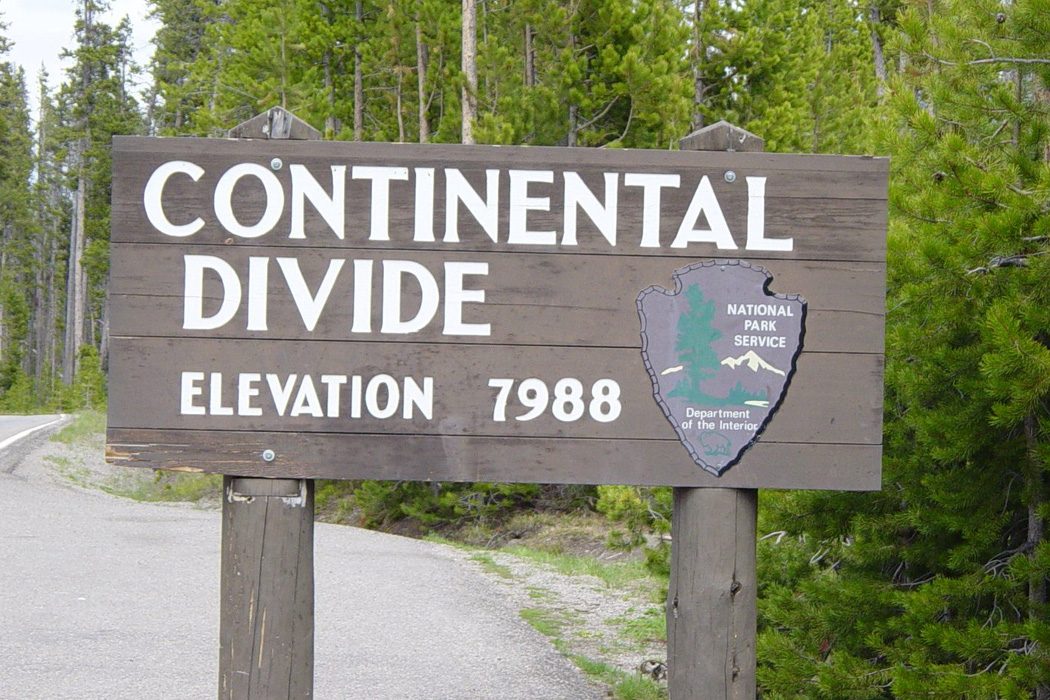Editor’s note: Each Thursday, we feature a throwback piece from Topology’s predecessor, catapult magazine. In this essay from 2010, Daniel Silliman reflects on maps, borders, God, and mystery.
It was impossible to see the border. In the night, our headlights only lit the road and the moon only showed the silhouette of the mountain, jaggedy firs and bare boulders, signs for coming zig-zags and falling rocks.
“Do you think this is it?” my brother said. He had to shout. “Do you think we passed it?”
We had the windows rolled down and the air was getting cold as we climbed, sharper as spruce and fir grew thick. My brother was staring out into the wind as we went up the mountain and I was driving, watching where the road disappeared out in front of my headlights. We had lived, most our lives, on the American west coast. Born, both of us, within sight of the Pacific, the mythical West was always behind us, back there somewhere, the frontier just a feeling, and we could always see where the Japanese and Chinese jetliners left contrails in the sky, tracing ached lines East. So when we left we went that way. Out of the Olympic Mountains and into Seattle, we went through the city and out, through a tunnel, opening out into farmland. We went through the fields, past great, dinosaur-sized rolls of hay, and past Spokane, which seemed to be a series of brick buildings all about to crumble. We went up into Idaho, into the mountains, making for the Continental Divide.
I had been there before, and knew the pass and the road, and knew, too, that the invisible line in the mountains could be exhilarating. I told my brother I thought there was a pull out, a gravel lot with a sign where we could take a picture and stand there, in the dark, triumphant at having crossed over.
We didn’t see it though. In the night, with no moon, we only saw the shapes of trees and the road, inclining up, and then, without warning, down.
We all live much of our lives in relationship to borders. We can feel them. We live in respect to them. We all have our metaphorical edges, and literal lines, too. We all know what and where they are. They raise no questions, until they do, until we’re driving through the mountains and we ask ourselves, where exactly is this line?
Jonathan Culler is a literature professor who writes a lot of amazingly clear work on theory and on the kinds of questions that make thinking about literature and thinking about thinking really complicated. Culler says that the problem with borders and maps is that we see them and want them to be fixed. We always want to use our maps to know the world. We want our lines clear and permanent. But to find a line is to fall over. To use a map acknowledges a need to explore, to know more, a need to keep mapping. We don’t look at maps and think, “Ah then, no need to go there.” But there’s also something unsettling about this, about the way that maps don’t quite answer our questions and still need to be read. When we unfold our maps, we squint at them. We turn them around, fold them and unfold them again. When we look at our maps we often stop and then look up and off at the skyline, as if we might recognize the curve of the earth and then understand everything.
Maps require us to engage in the activity of mapping—something, according to Culler, that confuses us at least a little because it seems like it should be simple to master, but instead it’s never done, never certain, never finished. Writing specifically of theory, of mental and intellectual maps, Culler writes, “To admit the importance of theory is to make an open-ended commitment, to leave yourself in a position where there are always important things you don’t know. But this is the condition of life itself.”
There’s an old plot device, wisely out of fashion now, where a dying character has his whole life “flash before his eyes.” The idea is that in that one moment, everything he’s has ever known will be present at the same time. He understands. Everything is clear. Everything certain. This is the opposite, though, of a beatific vision. In a beatific vision, you see not what you have known, but what you have not known. You see not just the people you’ve loved (for what would that profit? Jesus asked), but instead you love all people. In a beatific vision, I think, you feel like you’re flying, and you feel this welling, swelling, open-ended commitment to everything and all of life. You love the books you didn’t read, the countries you didn’t visit, the worlds you have not heard of, the art you couldn’t have understood. It is overwhelming, and wonderful. You want to dance. It’s disorienting, like hearing the Beatles for the first time. You see, in a beatific vision, the infinity you cannot contain. You see the face of God. Not just your longing, preformed on a stage as worship. Not just your ideas, repeated in a creedal formulation. To have a beatific vision is to see God as endless, to actually be lost in God’s face.
Culler says that with our theories, our borders and our maps, we seek mastery. We seek certainty. But as we seek it we tumble into openness. We look for the line, the border, but our very act of attempting closure ends up opening everything. We want—I want—something very small. I want something just about me and clear borders, with no indeterminacy, but instead infinity flowers, and I find I don’t know where I am, but I love everyone.
I didn’t even see where the road changed and we started to descend, declining and picking up speed. Maybe the wind changed a little, like the air rushing in had a tone to it and the tone shifted slightly, but we didn’t notice right away. We were quiet, and I just drove. I let out the brake as we came out of curves and let the truck pick up speed. Our cab that was lit by dash light, and we could only see the road right in front of us, but then there was the moon, pale and open, and we could see the trees, green in the dark. They seemed to flick by faster, and then faster, and my brother was looking into the woods, into the shadows that flipped between each trunk. “Hey, did you see that?” he asked. I hadn’t. “A moose!” He shouted, excited, “A moose. It was a moose, or it could have been a bear.” Then he started laughing, jubilant and euphoric. He looked out the window and screamed, a long whoop that let everything go, a scream of joy that ended with a laugh, and a cough, and a funny grin.
“We did it,” he said. “But I never saw the line.”
Then we could see the whole mountain, all the way down into the plains of the East, and there, the sun was rising in a pink-hearted morning, turning the night into wisps of fog and gray.
Photo by Daniel Mayer (GNU Free Documentation License, Version 1.2).




